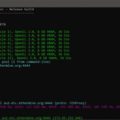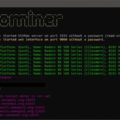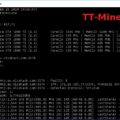
crypto-mining.club
DOWNLOAD:
Changes in the new version 4.8c:
PhoenixMiner 4.8c (GPU Miner) is the fastest, arguably fastest Ethash miner (ETH, ETC, Muiscoin, EXP, UBQ, etc.) that supports AMD and Nvidia cards (including ASIC / FPGA).
- -Added -gbase option for setting GPU indices 0 or 1 (default is 1). When using -gbase 1 (by default), the first GPU is GPU1, then GPU2, etc. When using -gbase 0, the first GPU is GPU0, the second is GPU1, etc.
Note that this also changes the indexes used throughout the command line. options that accept GPU indices (for example, -gpus), as well as those that are used with interactive commands in the miner window.
- -Added support for the latest AMD drivers for Linux 19.30-934563 with RX5700 cards for Linux. Please note that the drivers are quite buggy, and most overclocking options do not work, like most hardware monitoring options.
- -Added a new flexible way to configure GPU-specific options using selectors. Example: -cclock 1-3: 1090,4: 1300 -mclock nvidia: + 450, amd: 2000, *: 1900, gtx * 1070 * ti: +200
- -Support the latest AMD Windows 19.11.3 drivers (but theyalready working with 4.7c, since there were no significant changes in the OpenCL driver)
About AMD Linux 19.30-934563 drivers:
These drivers finally solve the problem with the RX5700 TLB, but they are not perfect:
- – Most hardware monitoring parameters do not work for RX5700 cards – even the temperature is not being reported correctly. Only energy usage, fan speed and voltage are reported.
- – Almost all hardware control options do not work for RX5700 cards, except for a noticeable power limitation, so the only way to avoid wasting power is to use -powlim -45. The fan control options don’t work either, so you’ll rely on the auto-fan.
About the new selectors for GPU-specific options:
This is best explained with an example:
-cclock *: 1100,1-3: 1090,4: 1300 – here we set the core frequency to 1100 MHz for all cards, except for cards 1 through 3, on which it is set to 1090 MHz, and for cards from 4 to 1300 MHz.
The part before the colon : is a selector that selects the GPUs for which the value after the colon applies.
The selector can be:
- – index of one GPU: for example 5: 1000 sets 1000 for the 5th GPU
- – range of GPU indices: for example 2-5: 1200 sets 1200 for GPUs 2,3,4 and 5
- – an asterisk that sets the value for all GPUs
- – amd or nvidia shortcut: for example amd: 1090 sets the value to 1090 for all AMD cards
- – an arbitrary string that starts with a letter and can contain letters, numbers, and asterisks that map to the GPU name specified by PhoenixMiner.
- Example: gtx * 1070: +500 will set the value to +500 for all cards that have “gtx” and “1070 in their names.
- Note that if more than one selector matches a given map, only the last one is taken into account.
- Example: -cclock *: 1100,1-4: 1090,2: 1300 will set card 2 to 1300; cards 1, 2 and 4 up to 1090;
- and the rest of the cards have a core frequency of 1100 MHz.












5 Comments So far